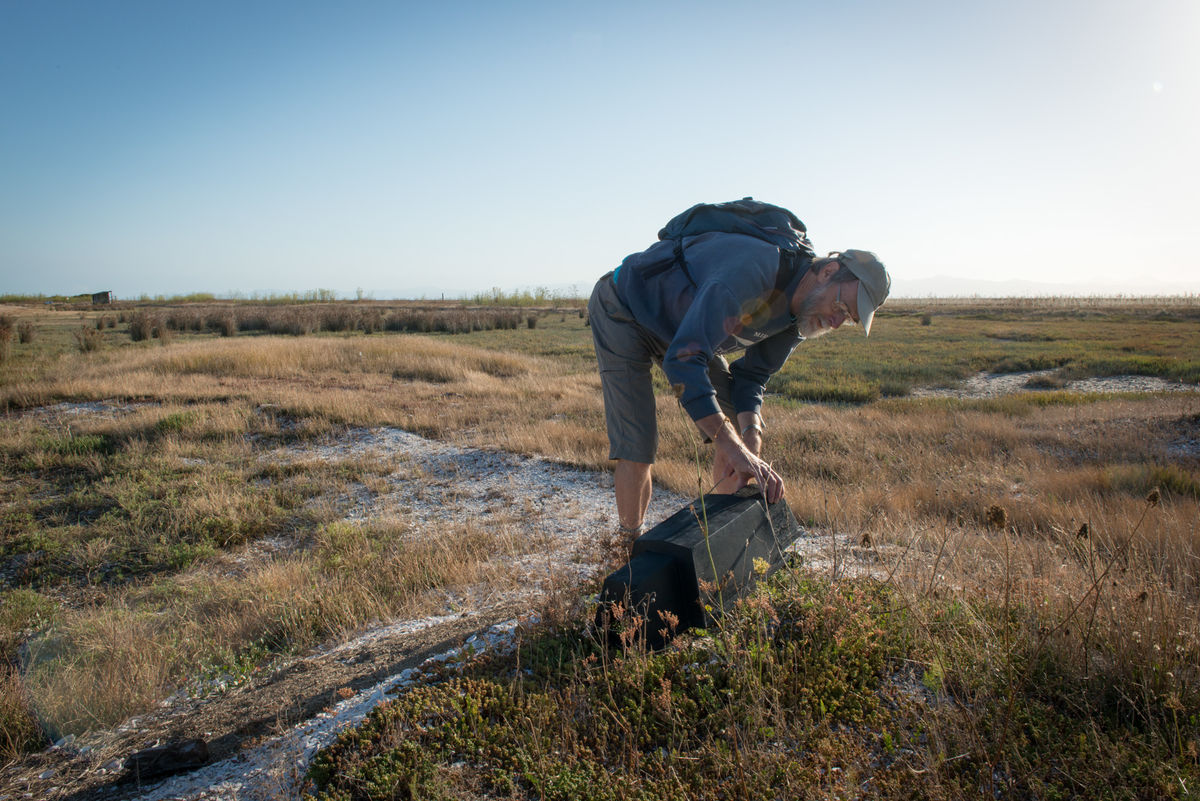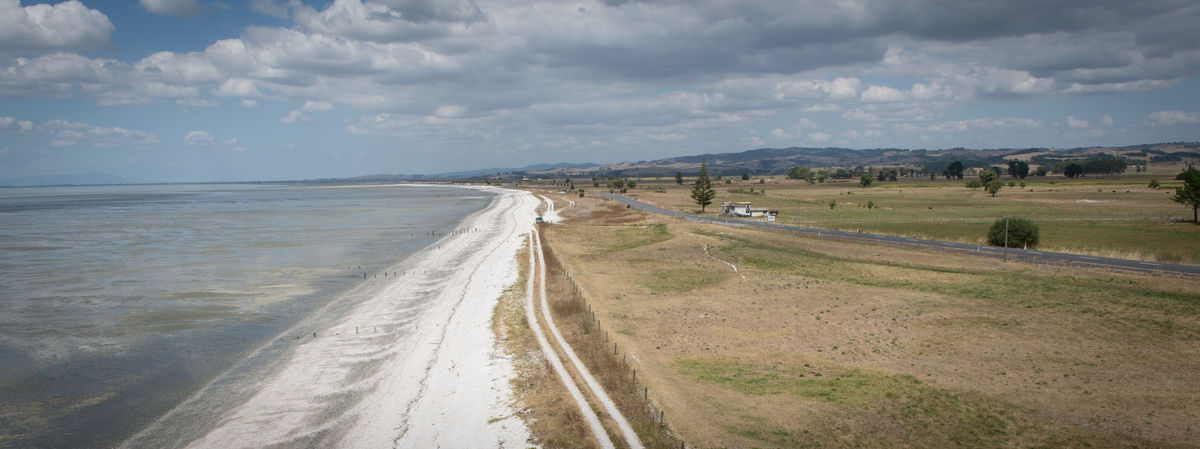
Coastal Wildlife Habitat Acquisition and Restoration
What was the project about?
The Pūkorokoro-Miranda streams flow into an internationally significant 8,500 hectare (ha) coastal wetland that is protected under the Ramsar Convention. Coastal reserve land in the catchment forms an important part of the migratory shorebird habitat. Drainage and clearance of wetlands, conversion to farmland, construction of roads and settlements, and the proliferation of weeds and pest animals, has reduced habitat for wildlife in the Pūkorokoro Miranda area severely impacting on ecosystem resilience. Drains were regularly cleared mechanically releasing sediment and nutrients into the water and removing vegetation. The ‘cleared’ environment created ideal conditions for algal blooms, which starved fish and invertebrates of oxygen meaning there were no food species to support wildlife and specifically migratory seabirds.
Living Water aimed to reverse the historic and incremental loss of wildlife habitat in a coastal landscape by supporting community implementation of ecological restoration activities. A goal was to bring back nature into an agricultural landscape and demonstrate that restoration activities needn’t impact on farm productivity. Living Water also wanted to model the potential of low lying coastal lands, which are subject to sea level rise and climate change, as economically viable sites suitable for “blue carbon” (wetlands as carbon sequestration sites).
Ecological corridors at Pukorokoro-Miranda, New Zealand
Ecological corridors at Pukorokoro-Miranda, New Zealand
How was the project undertaken?
An area around the Miranda and Pūkorokoro stream mouth was identified for wildlife habitat restoration. The area was adjacent to a wildlife refuge and intertidal area designated under the RAMSAR Convention as internationally important for shorebirds. It was flat with good public access and was visible from the road so progress could be observed by the community. Living Water wanted to purchase the land to increase the area of freshwater and estuarine wetland within the total catchment by 20 percent and improve breeding, roosting and feeding conditions for shorebirds leading to greater resilience of their populations.
In 2014, a farmer offered 60ha of land for sale, but after three years of negotiations Living Water could only secure support and funding to purchase about a third of that land. Subdividing the 60ha into a smaller block to enable Living Water to purchase the land outright was not possible.
In the end, the entire 60ha site was purchased through a joint venture between the Department of Conservation (DOC) and a neighbouring farmer. It was then subdivided with the farmer taking ownership of 40.4ha and DOC taking ownership of 19.6ha, which was then designated a Wildlife Management Reserve (under the Reserves Act 1977). The transaction was completed in November 2018 at a cost of $981,500 including land purchase, plans, consents, subdivision, fencing, and establishing a Trust with seed funding to begin ecological restoration work.
With a time-limited work programme (2013-2023) Living Water needed to establish a Community Trust to lead the ecological restoration and ongoing management of the reserve into the future. The new reserve needed a management plan agreed to and supported by local community stakeholders. Living Water piloted a collaboration best practice model called ‘Incubate’, to establish a community trust that will ultimately control the restoration of the reserve. The Incubate participants formed the Tiaki Repo Ki Pūkorokoro Trust (TRKPT) and includes Ngati Paoa, Pūkorokoro Miranda Naturalists Trust (PMNT), WFCG, Te Whangai Trust, Dalton Family Trust, Ecoquest, a community representative with DOC, Living Water, Waikato Regional Council and NZ Landcare Trust advisor to the TRKPT.
The Incubate process began with an independent facilitator carrying out one-on-one interviews to identify the participants’ social, environmental, and cultural aspirations. These findings were used to establish shared values, mission, and vision statements during a series of 3-hour meetings with the wider group. The meetings in Pūkorokoro-Miranda were held monthly for 18 months, leading to the TRKPT being established in 2019 and enabling ongoing development of the restoration plan. Living Water also introduced an MOU (Memorandum of Understanding) that it adapted from a collaborative project in Northland. Called an MEA (Mana-Enhancing Agreement) it is different to a regular MOU in that it seeks to build the mana of all signatory parties.
What lessons were learnt from the project?
The Crown’s land purchase process is complex and time consuming. DOC had to apply to the Crown’s Land Acquisition Fund (LAF) for funding to make to the land purchase. The LAF has constraints that meant the purchase could only proceed with the involvement of a neighbouring landowner and his agreement to subdivide. The complexity of Crown’s land acquisition process required specialist skills and expertise. Simpler options to improve wildlife habitats on public land or implementing other freshwater ecosystem restoration initiatives may have produced results sooner. One example within the Pūkorokoro Miranda catchment is Living Water’s ‘Mountains to Sea’ project where landowners are supported to improve water quality and biodiversity on farmland.
Establishing a new community-led trust comprising iwi, councils, farmers and conservationists was a complex process. It took over three years to agree shared values, a mission and vision, a strategy, how to work together, and form the legal entity. Research confirms that without this careful foundation work Trusts are unlikely to survive into the long term. Don’t lose sight of the fact that they are called “Trusts” for good reason. Grants to Trusts do not generally fund administration putting significant pressure on volunteers with the risk that people will leave. Consequently Living Water provided the necessary ‘foundations’ for the Trust to operate from day one. This includes an ecological restoration plan and seed funding until 30 June 2023
News updates
- Vlog of area damaged by floods and new boardwalk rebuilt June 2018
Among our aims as a trust is to promote awareness of coastal ecologies and to advocate for shorebirds and their habitats. Anything that’s going to help us do that is great for us. Living Water has provided in various ways, they’ve assisted us in doing what we do and allowed us to do things better.
